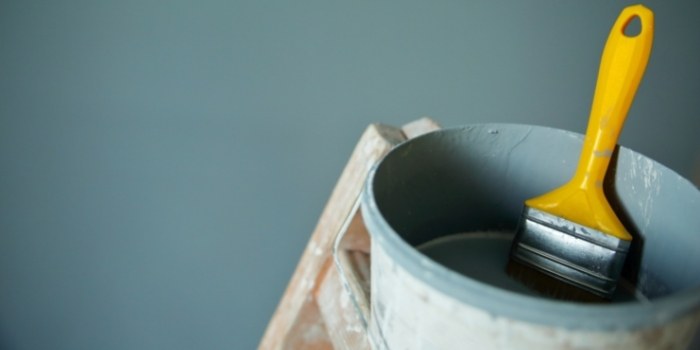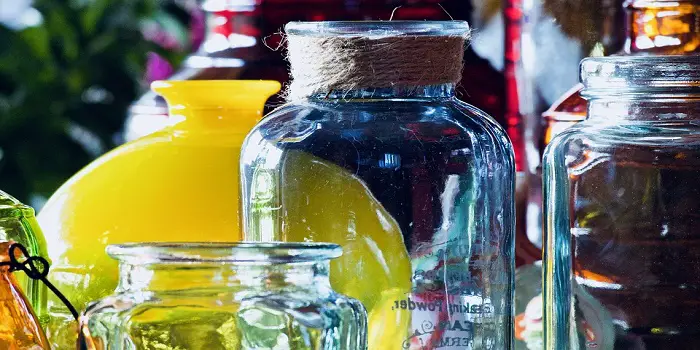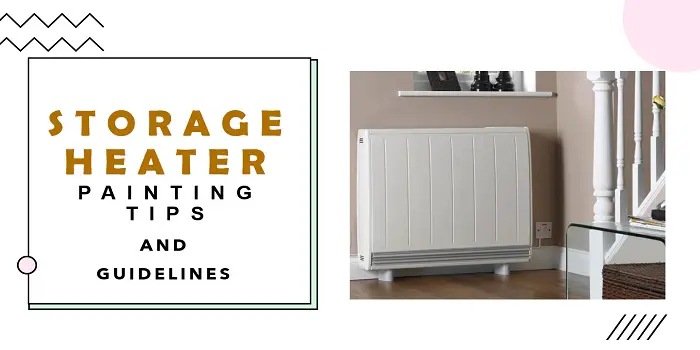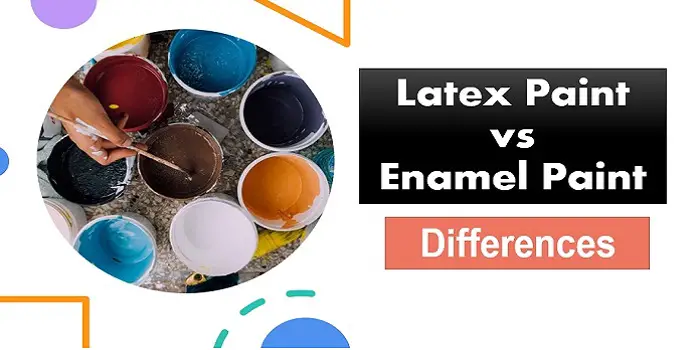
Emulsion paint is a type of paint that combines a pigment with an emulsifier, such as water or oil. The pigment gives the paint its color, while the emulsifier helps bind the pigment together and keep it from clumping.
Emulsion paint may also contain other ingredients, such as fillers, stabilizers, and antioxidants. These help to improve the quality of the paint and make it more durable.
What's Here in the Article:
Uses
Emulsion-based paint is most commonly used for painting walls and ceilings to provide a smooth, even finish that is easy to clean. Many painters often use it as a base coat for other types of paint, such as enamel or oil-based paints.
MDF cabinets and furniture can also be painted with emulsion paint without a problem. However, it is important to make sure that the MDF is sanded and primed before painting and that the paint is well-mixed.
Different Types
Emulsion paints are available in different types on the market. These are generally categorized based on the finishes like matte, silk, or soft sheen.
You can also choose between matt or vinyl matt. While both these types provide a smooth, even finish vinyl matt emulsion is a type of paint that contains vinyl polymers which help to make the paint more durable and resistant to staining. Matt emulsion, on the other hand, does not contain vinyl polymers and therefore is not as durable.

Emulsion Paint Application
Emulsion paint is a popular choice for painting walls in the home as it is less expensive, easy to apply, and dries quickly.
But to get the right finishing and long-lasting results, it’s important to know how to correctly apply this type of paint on your interior or exterior walls. Here is a step-by-step guide on how to apply emulsion paint to walls:
Step 1) Prep
Begin by preparing the wall surface that you are going to paint. This includes stripping the old peeling paint or removing any old wallpaper, cleaning the wall, and filling in any cracks or holes with crack filler putty.
After that use a sanding block with medium-grade sandpaper, such as 120 grit to sand the surface lightly and make the surface smoother.
Step 2) Apply the Paint
Once the wall is prepared, you can start painting the surface with emulsion paint using a roller or natural bristle brush. Begin at the top of the wall and work your way down in small sections to apply the paint evenly.
Remember that emulsion paints typically have a thick consistency when you first purchase them, requiring the addition of water for the desired texture. However, if you’ve inadvertently added too much water and the paint becomes excessively watery, it’s necessary to thicken it before application.
There are several methods to achieve this, one being the incorporation of a thickening agent. Utilizing substances like flour, cornstarch, or xanthan gum can effectively enhance the viscosity of the paint, rendering it thicker. Another approach involves gently heating the paint, though caution must be exercised to prevent any harm to its quality during this process.
Step 3) Let the Surface Dry and Apply the Second Coat
Allow the first coat of paint to dry completely (for atleast 2-3 hours) then consider applying a second coat as you have applied the first. This will ensure that your paint job looks professional and lasts longer.
Once the second coat of paint is dry, you can add any finishing touches, such as painting trims or around light fixtures. If required, add a final third coat of paint to your walls and let them dry completely for at least a day. You are now ready to enjoy your newly painted wall.
How to Remove Emulsion Paint?
Water-based or emulsion paints are commonly used for interior home painting (for various surfaces such as walls, furniture, or UPVC windows) due to their versatility.
They’re also relatively forgiving when it comes to removing stains from clothing if addressed promptly. While wet, emulsion paint can be easily removed with warm, soapy water and a cloth. However, once dry, the task becomes more challenging.
Like other paints, emulsion paint removal options include using a paint stripper, sandpaper, or a heat gun. Paint strippers are chemical solutions designed to dissolve paint, facilitating its removal.
Sandpaper can effectively sand off the paint, while a heat gun can loosen it for scraping. It’s crucial to exercise caution, especially with a heat gun, to prevent damage to surfaces such as UPVC and wood from excessive heat.
Before resorting to any of the methods listed here, remember that dry emulsion can often be painted over without the need for removal. So, its good to consider assessing whether simply painting over the dried emulsion is a viable option for achieving the desired result or not.
Emulsion vs. Distemper Paint – What’s the Difference?
While both distemper paint and emulsion paint are water-based paints, there are a few key differences between them.
Distemper paint is made with a chalk or lime base (basically, it’s a combination of lime, pigment, chalk, water, and animal glue), whereas emulsion paint is made with an acrylic base or from synthetic polymers, pigments, and additives. This gives emulsion paint a more durable and smoother finish that is less likely to crack or peel. Emulsion paint is also typically more expensive than distemper paint but tend to provide superior coverage which makes them cost effective.
Another difference between both is distemper paint offers the convenience of direct application onto cemented walls without the need for a primer coating. Whereas emulsion paints necessitate application over a layer of primer or putty for optimal results. Because of this reason distemper paint is susceptible to smudging or peeling when wet, whereas emulsion paint colors remain unaffected by exposure to water.
Unlike water based emulsion paints, there are two main types of distemper paints: water-based and oil-based. Water-based distemper paint is the most common type, as it is less toxic and easier to clean up than oil-based paint. However, they may not provide long-lasting durability.
Related FAQs
Are primer and emulsion the same or different?
No, they are not the same; there is a difference between both. Primer is designed to adhere to a surface and provide a key for the paint to grip onto, whereas emulsion is simply the paint itself.
Applying the primer is necessary when you need to apply emulison paint over bare wall surfaces or wod. However, when painting over a previously painted surface using primer might not be necessary .
Can you paint eggshell over matt emulsion?
Yes, eggshell paint can be applied over matt emulsion. Eggshell paint has a slightly higher sheen than matt emulsion, but it will still provide a smooth, even finish. It is important to make sure that the surface is clean and dry before painting and that the paint is well-mixed.
Can you use matt emulsion as an undercoat on walls?
Matt emulsion can be used as an undercoat on walls as a substitute for primer. An undercoat is typically needed when painting over a dark color or when painting a new wall for the first time. Like if you are painting over a dark color, it’s a good idea to use a white matt emulsion as an undercoat to help cover the old color.
Share the post "What is Emulsion Paint – Uses, Types & Application Tips"

Douglas Becker (aka Painter Doug) has over twenty years of experience as a painter in Adkins, Texas. At present, he resides in Florida with his family.
From painting multi-storeyed houses, condos, and apartments to large commercial buildings and small offices, he had served various customers in areas not only in Adkins but also in Southwest Florida, Sarasota, Naples, and many more. To know more about him check here.




